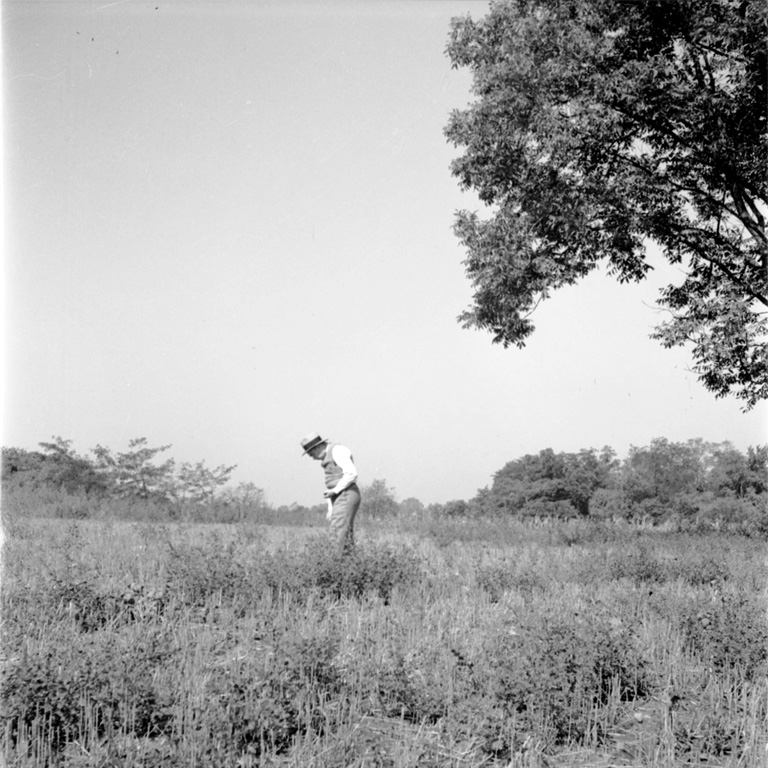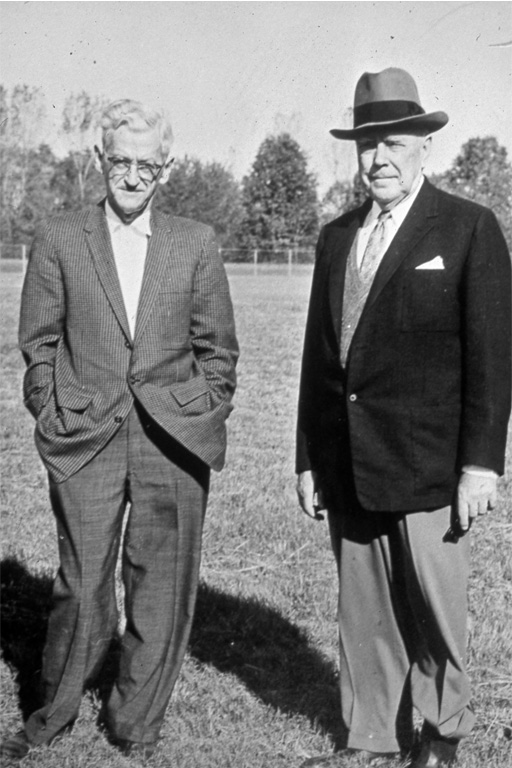Eli Lilly Jr. (1885-1977) was a pharmaceutical industrialist and philanthropist from Indianapolis, Indiana. His fascination with the history of the American Midwest grew from a collector of artifacts into a serious academic interest. His artifact collections, correspondence, and archaeological library are housed at the IUMAA. Read further down the page for a more complete biography of his interests regarding archaeology.
The Lilly Collections
Collection Highlights
Artifacts
The IUMAA Archaeology Collections house approximately 7,500 artifacts that make up the Lilly Collections. These artifacts consist of everything from stone tools to large pottery specimens to gorgets and axes. Pipes and birdstones can also be found.
Books and Papers
The IUMAA Reading Room contains an archive of archaeological correspondences from Eli Lilly as well as many of his antiquarian books related to archaeology. A large, 6 foot tall, pinned map of Indiana once belonged to Eli Lilly.
Eli Lilly's Interests in Archaeology
The Beginnings
Eli Lilly began his career in the family pharmaceutical company, succeeding his father as President in the year 1932. His interest in archaeology would not develop until he reached his forties and, even then, his dedication to Eli Lilly and Company would continue to absorb much of his time and attention. Still, Lilly managed to pursue his developing interest by becoming a collector of artifacts, specializing in “problematical forms” (artifacts of a mysterious, unresolved nature).

As his interest progressed, Lilly became involved with an early group of archaeologists belonging to the Indiana Historical Society (IHS), a group which also included Glenn A. Black. The year 1931 marked a turning point for Lilly and his fellow IHS members when they embarked on a 3-day tour around Indiana’s various archaeological sites, a trip that energized and re-confirmed Lilly’s passion for prehistoric archaeology. Inspired, he began to concentrate his research and became particularly concerned with the concept of time, exploring ideas of chronology that would define his archaeological work for the rest of his life.
A more serious approach
Eli Lilly took these ideas and experiences and began to build towards two new works that would later represent his monumental contributions to the archaeology of Indiana—Prehistoric Antiquities of Indiana (1937) and the Bibliography on Indiana Archaeology (1932). As these works developed, Lilly began constructing his “plan of triangulation” for various sites around the state. This was meant to be a holistic approach to a single archaeological site, incorporating as many perspectives and methods as was relevant to solving the ancient puzzles, particularly when concerned with understanding the chronology of a given location. This approach resulted in the expansion of his involvement in the archaeological community, making him not only an active participant in research but the sponsor of other students and archaeologists as they explored their own works, recruiting them as a means of developing the larger picture of prehistoric cultures and chronologies. It was at this time that he began his collaboration with Edward Sapir in founding a fellowship for archaeological fieldwork. He eventually transitioned from the role of interested collector to professional student, forcing himself to conclude his close friendship with W.A. McGuire, an official dealer of antiquities:
"For better or for worse, I have cast in my lot with the scientific archaeologists and, as a result of that, I have stopped buying from all sources, and particularly those from which I am unable to obtain the exact descriptions of the locations and manner of the excavation, with all details."
-- Eli Lilly to McGuire, 13 Feb 1932
This was the beginning of a long period of time devoted to graciously funding and supporting other research interests and projects, demonstrating great tolerance and patience when needed. Around 1935 Lilly became involved with the Angel Mounds project, covering various costs that could not be obtained through local communities or the WPA project due to the impact of the Depression.

Connecting with Glenn Black
The success of Eli Lilly’s involvement with the Angel Mounds site might not have been possible if it had not been for his very close relationship with Glenn A. Black with whom he maintained a personal bond frequently described as one between father and son. Black maintained the care and excavation of Angel Mounds through his IU field schools, frequently writing to Lilly with updates, requests, and questions. Following Black’s death in 1964, Lilly requested the opening of a new lab in Black’s name, a lab which would house the results of both of their careers. His efforts were successful and the Glenn Black Labratory of Archaeology opened in 1971 (Madison 1988), which is now part of the IUMAA.
Resources
Madison, James L. Eli Lilly: Archaeologist. Indiana University Glenn A. Black Laboratory of Archaeology Research Reports, No. 8, 1988.
Madison, James H. Eli Lilly: a life, 1885-1977. Indianapolis: Indiana Historical Society. 1989. [IUCAT]
Peebles, Christopher. “The Prehistory of Mr. Eli Lilly.” Southeastern Archaeology. Vol 31, No. 2 (2012).
Ruegamer, Lana. A History of the Indiana Historical Society, 1830-1980. Indianapolis: The Society, 1980. [IUCAT]
Wright, Carl M. "Eli Lilly-Leadership & Vision for Indiana Archaeology," Central States Archaeological Journal. Vol. 48, No. 4 (Oct 2001).

